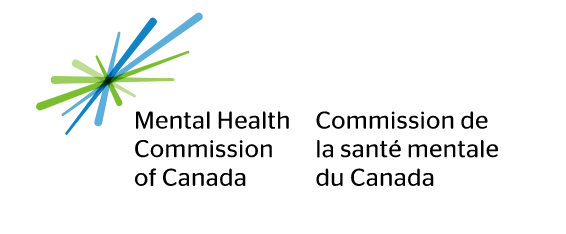
Oct 26, 2021
Purpose
This policy brief provides an overview of the developing issues and unique mental health and substance use challenges that COVID-19 poses for rural and remote communities. It builds on a preliminary scan the Mental Health Commission of Canada (MHCC) completed at the outset of the pandemic and on an evidence brief on best and promising practices written just before it began. The current brief includes an updated literature review, a section on diverse populations and social determinants of health, domestic and international policy responses, and policy recommendations. Also included is a case study that highlights the British Columbia (B.C.) community of Princeton, in collaboration with the Princeton Community Health Table. Its primary audience comprises policy makers and organizations across the mental health and substance use sectors that serve rural and remote communities.
Key messages
- The COVID-19 pandemic continues to have a substantial impact on the mental health and substance use needs in rural and remote communities and on a growing lack of access to adequate and timely services and supports.
- The unique context, the influence of the social determinants of health, and health equity considerations play major roles in how COVID-19 affects these communities in terms of mental health and substance use.
- Provinces and territories pivoted quickly to provide innovative virtual mental health and substance use services. However, the lack of access to broadband internet coverage and information and communication technology (ICT) make it harder for people living in rural and remote communities to access services and supports.
- The pandemic has been a challenge on the resources, capacity, and solidarity of rural and remote communities but has reinforced the importance of resilience.
- Given the pandemic’s expected long-lasting effects on mental health and substance use, the post-pandemic period will be critical. It will also be an opportunity to transform the system and address unique impacts for people living in rural and remote communities.
Acknowledgments
The Mental Health Commission of Canada (MHCC) operates primarily on the unceded traditional
territory of the Anishinabe Algonquin Nation, whose presence here reaches back to time immemorial.
The Algonquin people have lived on this land as keepers and defenders of the Ottawa River watershed and its tributaries. We are privileged to benefit from their long history of welcoming many nations to this beautiful territory. We also recognize the traditional lands across what is known as Canada, on which our staff and stakeholders reside.
Our policy research work uses an intersectional sex- and gender-based plus lens to identify, articulate, and address health and social inequities through policy action. In this respect, it is guided by engagement with diverse lived experiences (and other forms of expertise) that shape our knowledge syntheses and policy recommendations. We are committed to continuous learning, and we welcome feedback.
The MHCC would like to thank the Princeton Community Health Table and our other partners, external reviewers, and staff for their important and valued contributions to this work.
Partners
Nelly D. Oelke, PhD, RN, Associate Professor, University of British Columbia school of nursing, Okanagan
Lauren Airth, MSN, RN, University of British Columbia school of nursing, Okanagan
Expert reviewers
Carolyn Szostak, PhD, Associate Professor, University of British Columbia department of psychology,
Okanagan
Rebecca Jesseman, MA, Policy Director, Canadian Centre on Substance Use and Addiction
Matthew Young, PhD, Senior Research and Policy Analyst, Canadian Centre on Substance Use and Addiction
Denika Ward, Community Suicide Prevention Coordinator, Roots of Hope Project — Eastern Health
Tanya Wilson, Senior Health Consultant, New Brunswick Department of Health, on behalf of the Roots of Hope New Brunswick team: Dr. Jalila Jbilou, coordinator Celine Fortin, Serge Robichaud, and Dominic Bourgoin.
MHCC staff
Katerina Kalenteridis, Francine Knoops, Dr. Mary Bartram
[Excerpts]
Purpose
This policy brief provides an overview of the developing issues and unique mental health and substance use challenges that COVID-19 poses for rural and remote communities. It builds on a preliminary scan the Mental Health Commission of Canada (MHCC) completed at the outset of the pandemic and on an evidence brief on best and promising practices written just before it began. The current brief includes an updated literature review, a section on diverse populations and social determinants of health, domestic and international policy responses, and policy recommendations. Also included is a case study that highlights the British Columbia (B.C.) community of Princeton, in collaboration with the Princeton Community Health Table. Its primary audience comprises policy makers and organizations across the mental health and substance use sectors that serve rural and remote communities.
Key messages
• The COVID-19 pandemic continues to have a substantial impact on the mental health and
substance use needs in rural and remote communities and on a growing lack of access to adequate and timely services and supports.
• The unique context, the influence of the social determinants of health, and health equity
considerations play major roles in how COVID-19 affects these communities in terms of mental
health and substance use.
• Provinces and territories pivoted quickly to provide innovative virtual mental health and substance
use services. However, the lack of access to broadband internet coverage and information and
communication technology (ICT) make it harder for people living in rural and remote communities
to access services and supports.
• The pandemic has been a challenge on the resources, capacity, and solidarity of rural and remote communities but has reinforced the importance of resilience.
• Given the pandemic’s expected long-lasting effects on mental health and substance use, the postpandemic period will be critical. It will also be an opportunity to transform the system and address unique impacts for people living in rural and remote communities.
Background
No single definition of rural or remote exists in Canada.
1 Because each rural and remote community is unique, they are often defined by the experience and perceptions of the individuals who live there.
2 According to Statistics Canada, rural and remote communities include “all areas outside population centres”
3 Canadian research often defines rural as “communities with a core population of less than 10,000 people, where less than 50% of the employed population commutes to larger urban centers for work”.
4 In light of these differences, this policy brief uses both the academic definition of rural and remote as well as the lived experience of people in these communities. Prior to the pandemic, research on rural and remote communities found that problems related to mental health and substance use vary when compared to urban settings.
5- 8 Evidence shows similar overall rates of mental health problems but differences in terms of specific mental illnesses and patterns of substance use.
9,10 Rural and remote communities face higher rates of suicide — including suicidal
ideation, attempts, and deaths — than urban settings.
11 Some rural and remote communities also report that substance use is a risk factor for suicide attempts and deaths.
12,13 People in these communities who use drugs also have different patterns of use and access to harm reduction services while facing a greater risk of poisoning, morbidity, and mortality.
14-16 Over the course of the pandemic, the distinct risks in rural and remote communities have led to more impactful outbreaks.
17,18 They have been at higher risk of COVID-19-related harms because, on average,
they have a larger proportion of people over 65, higher burdens due to chronic illness and underlying medical conditions, and lower degrees of mobility.
19-21 These communities also face unique challenges across the social determinants of health, which include higher levels of income inequality,
22 a lack of consistent and local employment,
23 a seasonal and rotational way of life,
24 increased levels of food insecurity,
25,26 more limited access to clean water,
27 and less access to high-speed ICT.
28 COVID-19 and its resulting public health measures, particularly those involving social distancing, have strained rural economies and social connections.
29-32 As well, the pandemic has been associated with a drug supply that is becoming increasingly toxic.
33 When combined with a decrease in services and increased stress on people who use drugs, this has resulted in increased drug poisonings across Canada,
34 with disproportionate impacts for rural and remote communities and for First Nations and
Métis.
35-37 In conjunction with mental health and substance use services that are stretched thin, social
isolation, economic stressors, and the drug crisis are expected to have greater and longer-lasting effects on mental health and substance use for rural and remote communities.
38 The pandemic response in these communities has been limited, given that they have fewer health, mental health, substance use, and social resources (such as shelter, water, and nutrition).
39-41 The pandemic has exacerbated pre-existing gaps in access to mental health and substance use services and has added to already persistent shortages in the number of service providers.
42-45 These access gaps include specialized mental health services, many in-person harm reduction services and supports, and other substance use treatment services, including opioid agonist treatment.
46 Several in-person services and supports (e.g., peer support) have also moved to virtual platforms, which face particular limitations in rural and remote communities.
Many of these communities have lacked access to personal protective equipment (PPE) and other public health resources.
47 These shortages have been especially challenging because there are often very few
service providers. Those that are available have large caseloads among people who are both suffering and not suffering from COVID-19. Moreover, rural and remote catchment areas frequently span large geographic areas that may have been impacted by travel restrictions within and between jurisdictions.
48 Although federal, provincial, and territorial governments have attempted to prioritize rural and remote communities for the provision of PPE, vaccines, and other resources, the rollout of this relief has been slow, and initially it left many without access.
49-51 As an example of the pandemic’s impact on mental health and substance use in a rural community, the following case study describes a grassroots initiative undertaken by the community health table in Princeton, B.C.
Case Study: Princeton Community Health Table
Description of the community
Princeton is a beautiful town, situated in the Similkameen Valley and surrounded by mountains, as
seen in the pictures below.
Among the 4,780 people who live there, the majority are 50 and older. Over 10 per cent of the population identifies as Indigenous. While the mean income is $57,000, eight in 10 residents fall below the poverty line. Mental health and substance use have both been identified as significant concerns. The rates of anxiety, mood disorders, and depression are eight times as high as those in the rest of the province, and like many rural communities in B.C., the community suffers disproportionately from the toxic drug crisis and consistently has one of the highest drug-related death rates per capita.
Over the past year, these high rates of mental health and substance use have been further exacerbated by the COVID-19 pandemic.
Like other rural communities, Princeton has more limited resources for addressing mental health
and substance use concerns than urban settings.
Currently, it has one mental health and substance use counsellor, one mental health adult psychiatric nurse, one youth mental health worker, and one outreach worker (shared with another town about 45 minutes away). These limits make it difficult for the community to provide services and supports that are adequate for the population’s needs. Another concern is the ability to retain staff, which is common in rural settings.
Despite these challenges Princeton has many strengths, which include the high level of resilience
common to rural communities and the many people and organizations who work together to
address the needs of community members. One such initiative is the Princeton Community Health
Table (PCHT).
Development of the PCHT
The PCHT was formed in June 2020 as part of the BC Rural and First Nations Health and Wellness Summit, sponsored by the Rural Coordination Centre of BC and the First Nations Health Authority.
At the summit, partners came together to discuss and plan for health services delivery in Princeton
and surrounding areas. The PCHT identified mental health and substance use as priorities for the
health and wellness of the community. The group began with eight members representing various
partner groups, including community members, providers, policy makers, and academic partners. It decided to continue to meet after the summit to plan, develop, and implement various community based activities to promote mental health and well-being. The final makeup of the group provided a strong representation of community members who could lead this grassroots initiative to improve services and supports for the community at large.
Today, PCHT membership includes 14 people representing several organizations:
• Support Our Health Care
• Princeton and District Community Services Society
• Princeton Family Services Society
• Vermillion Forks Métis Association
• Okanagan Regional Library
• School District 58
• Princeton Secondary School
• Vermillion Forks and John Allison Elementary schools
• Town of Princeton
• Princeton Regional Hospital
• Princeton RCMP Victim Services
• Princeton Community Support
• Upper Similkameen Indian Band
• University of British Columbia, Okanagan
The PCHT meets every four to six weeks.
Goals of the PCHT
- Develop a community-driven package of mental health/substance use improvements.
- Study the implementation of specific enhancements to mental health/substance use service
accessibility. - Evaluate the outcomes attributed to the implementation of mental health/substance use
service advancements. - Sustain progress via new partnerships and existing community partnerships.
- Develop a transferable and adaptable model for implementing improved mental
health/substance use services in rural and remote B.C. communities.
Current PCHT activities - Increasing awareness of mental health and substance use and the available services and
supports:
• two brochures (adults and youth) that include information about local and provincial
resources
•education sessions for students in the Princeton Secondary School
• Princeton Secondary School forum with Jack.org speaker
• virtual public forum on Breaking the Stigma
- Providing services and supports:
• Working in partnership with the South Okanagan Women in Need Society, a Penticton based agency that comes to Princeton one day each week to provide drug-testing resources
and harm reduction information. Also offered is a pop-up table for health information
(inclulding COVID) and basic wound care, along with other harm reduction materials.
Successes and challenges
As the PCHT continues to work toward its goals, one significant success is the enthusiasm and
commitment provided by its individual and organizational representatives and the new
partnerships being developed. A second success has been a practicum with two fourth-year nursing students in Princeton, supported by the school of nursing at the University of British Columbia, Okanagan. These students worked half their hours with the PCHT in the community and the other half in the local hospital, contributing to various PCHT activities (e.g., the two brochures, education
materials for secondary school students). Also, by connecting what was happening in acute care
with what was occurring in the community, the students were able to see the importance of
prevention and early intervention as a way to better serve those who live with mental health and
substance use needs. A third PCHT success has been the strong partnership with the secondary
school in Princeton, which enabled it to deliver education and awareness for the students. Having a student PCHT member has been key to facilitating this connection.
Alongside these successes, two main challenges remain. One is developing a strong connection,
both with organizations that deliver harm reduction services and the individuals who use or may
need them. The PCHT continues to build partnerships with additional organizations to explore
further services and supports for this population. Funding is also a major challenge. While the PCHT has applied for numerous community-based and research funding opportunities, apart from some funding for the printing of brochures, it has had minimal success to date.
Conclusion
The PCHT has brought together a grassroots group of individuals and community organizations that have prioritized the mental health and substance used needs in their community. It includes a
broad representation of partners who are working together to address these areas, which is
particularly important in the pandemic context. Following some early successes, the PCHT
continues to work on various activities and approaches to address the needs of community
members. Despite some current challenges, the PCHT’s commitment to improving the mental
health and well-being of the Princeton community continues to be at the forefront of its work.





